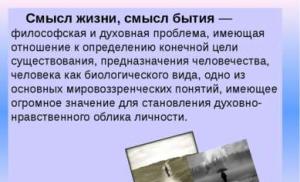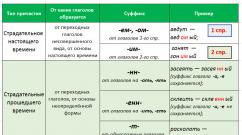An antihypertensive drug from the group of ganglion blockers. Ganglion blockers for pressure
The sensitivity of H-cholinergic receptors to the action of drugs is different, which also manifests itself with blockade of H-cholinergic receptors. Medicines of one group block H-cholinergic receptors of the autonomic ganglia, sinocarotid zone, and adrenal medulla - ganglion blockers; another group - block H-cholinergic receptors at neuromuscular synapses - peripherally acting muscle relaxants or curare-like drugs.
GANGLION BLOCKERS
By blocking H-cholinergic receptors of the sympathetic and parasympathetic autonomic ganglia, medicines this group causes a number of characteristic changes:
Ganglion blockers dilate blood vessels and reduce blood pressure, which is due to the blockade of sympathetic ganglia and the elimination of sympathetic vasoconstrictor impulses;
Ganglion blockers reduce the release of adrenaline by blocking H-cholinergic receptors in the adrenal medulla;
Ganglion blockers reduce impulses to the vasomotor center from the carotid glomerulus, blocking H-cholinergic receptors in the carotid sinocarotid zone; these properties of ganglion blockers are used to treat hypertension, however, it should be borne in mind that this may cause a sharp drop in blood pressure, especially when changing body position - orthostatic collapse (therefore, after taking ganglion blockers, you should be in a horizontal position for 2-3 hours); vasodilation lower limbs and improving their blood supply make it possible to use ganglion blockers also for the treatment of diseases accompanied by peripheral circulatory disorders (obliterating endarteritis, etc.); They are also used for pulmonary and cerebral edema, as well as for controlled hypotension during operations to reduce blood loss (short-acting ganglion blockers);
Ganglion blockers reduce tone smooth muscles internal organs and reduce the secretion of glands, including glands gastrointestinal tract; this allows them to be used for treatment peptic ulcer stomach and duodenum, hyperacid gastritis, etc.;
Ganglioblockers have (some ganglioblockers) a stimulating effect on the muscles of the uterus (for example, pachycarpine increases the tone of the muscles of the uterus and also reduces blood pressure, which is used during childbirth, especially in the case of high blood pressure in women in labor);
Ganglion blockers reduce the effect of sympathetic innervation on organs; used in surgical practice as premedications prescribed before surgery in combination with other drugs.
Due to side effects (orthostatic collapse, intestinal and bladder atony, dry mouth, impaired accommodation, development of addiction), ganglion blockers are currently used as inpatient therapy.
SHORT-ACTING GANGLION BLOCKERS
IMEKHIN- used for controlled hypotension, for pulmonary and cerebral edema, to relieve a hypertensive crisis. Imekhin is administered intravenously as a 0.01% solution of the drug in a 5% glucose solution or isotonic sodium chloride solution. Side effects when using imekhin: allergic reactions. Imequin should not be administered in the same syringe with barbiturates. Imekhin release form: ampoules of 1 ml and 2 ml of 1% solution. List B.
An example of a recipe for imekhin in Latin:
Rp.: Sol. Imechini 1% 1 ml
D.t. d. N. 6 in ampull.
S. Dilute 1 ml of 1% solution in 100 ml of 5% glucose solution and administer intravenously 90-120 drops per day
HYGRONIUM(pharmacological analogues: trepirium iodide) - used for controlled hypotension in the form of a 0.1% solution for nephropathy in pregnant women, eclampsia. Hygronium is used to relieve a hypertensive crisis. Side effects of hygronium: a sharp decrease in blood pressure. Hygronium release form: 10 ml ampoules containing 0.1 g of drug powder. List B.
Example of a recipe for hygronia in Latin:
Rp.: Hygronii 0.1
D.t. d. N. 10 in ampull.
S. Dissolve the contents of the ampoule in an isotonic sodium chloride solution and administer intravenously.
LONG-ACTING GANGLION BLOCKERS
BENZOHEXONIUM(pharmacological analogues: hexamethonium benzosulfonate) - used for treatment hypertension, relief of hypertensive crises, spasm of peripheral vessels, peptic ulcer of the stomach and duodenum, bronchial asthma. Benzohexonium is administered orally, subcutaneously, intramuscularly. Side effects when using benzohexonium: orthostatic collapse, mydriasis, bladder atony. Contraindications to the use of benzohexonium: arterial hypotension, liver and kidney dysfunction. Release form of benzohexonium: tablets of 0.1 g and ampoules of 1 ml of 2.5% solution. List B.
Example of a benzohexonium recipe in Latin:
Rp.: Tab. Benzohexonii 0.1 N. 20
D.S. 1 tablet 3 times a day.
Rp.: Sol. Benzohexonii 2.5% 1 ml
D.t. d. N. 6 in ampull.
S. 1 ml intramuscularly 1 time per day.
PENTAMINE(pharmacological analogues: Azamethonium bromide) - indications for use, side effects and contraindications for use are the same as for benzohexonium. Pentamine release form: ampoules of 1 ml of 5% solution. List B.
Example of a pentamin recipe in Latin:
Rp.: Sol. Pentamini 5% 1 ml
D.t. d. N. 6 in ampull.
S. 0.5 ml intramuscularly, gradually increasing the dose to 1 ml 2-3 times a day.
DIMECOLINE(pharmacological analogues: dimecoline iodide) - is close in action to benzohexonium. Dimecoline has the same indications for use, side effects and contraindications. Caution is required when combined with nitroglycerin, the effect of which is potentiated by dimecoline. Dimecoline release form: tablets of 0.025 g. List B.
Example of a recipe for dimecoline in Latin:
Rp.: Tab. Dimecolini 0.025 N. 50
D.S. 1 tablet 2 times a day, gradually increasing the dose to 2 tablets 2 times a day.
PACHYCARPINE HYDRIOIDIDE- used for spasms of peripheral vessels, to stimulate labor and reduce bleeding in the postnatal period. Pachycarpine hydroiodide is prescribed orally, subcutaneously, intramuscularly. Pachycarpine hydroiodide is contraindicated during pregnancy, severe hypotension, liver and kidney diseases. Release form pachycarpine hydroiodide: tablets 0.1 g; ampoules of 2 ml of 3% solution. Pachycarpine hydroiodide is available only with a doctor's prescription! List B.
Example of a recipe for pachycarpine hydroiodide in Latin:
Rp.: Tab. Pachycarpini hydroiodidi 0.1 N. 12
D.S. 1 tablet 2 times a day.
Rp.: Sol. Pachycarpini hydroiodidi 3% 2 ml
D.t. d. N. 10 in ampull. S. 2-4 ml intramuscularly 1 time per day.
CAMPHONIUS(pharmacological analogues: trimethidine methosulfate) - gives a pronounced ganglion-blocking effect. Camphonium is prescribed orally and parenterally (subcutaneously, intramuscularly). Indications for use, side effects and contraindications are typical for ganglion blockers. Kamphonium release form: powder; tablets 0.01 g; ampoules of 1 ml of 1% solution. List B.
Example of a camphonium recipe in Latin:
Rp.: Tab. Camphonii 0.01 N. 20
D.S. 1 tablet 1-2 times a day.
Rp.: Sol. Camphonii 1% 1 ml
D.t. d. N. 10 in ampull. S. 1 ml intramuscularly 1-2 times a day.
QUATERON- the action is close to benzohexonium. Quateron has the same indications for use, side effects and contraindications. Quateron is sometimes used to treat angina pectoris. Release form of quateron: powder and tablets of 0.02 g. List B.
Example of a quaterone recipe in Latin:
Rp.: Tab. Quateroni 0.02 N. 25
D.S. 1-2 tablets 3-5 times a day.
PYRYLENE(pharmacological analogues: pempidine tosylate) - used in the same cases as benzohexonium, has the same contraindications and side effects. Pyrylene release form: tablets of 0.005 g. List B.
Example of a pyrylene recipe in Latin:
Rp.: Tab. Pirileni 0.005 N. 20
D.S. 1-2 tablets 3-4 times a day.
TEMEKHIN- has indications for use, contraindications, side effects characteristic of ganglion blockers of this group. Tamekhin release form: tablets0.001 g each. List B.
Example of a tamehin recipe in Latin:
Rp.: Tab. Temechini 0.001 N. 50
D.S. 1 tablet 2-4 times a day.
Introduction
Ganglion blockers and curare-like drugs belong to one large group of drugs that affect efferent innervation, but they are completely different drugs in their effect on the human body.
Ganglion-blocking substances have the ability to block n-cholinergic receptors of the autonomic nerve ganglia and, therefore, inhibit the transmission of nervous excitation from preganglionic to postganglionic fibers of the autonomic nerves. Modern ganglion blockers inhibit or completely turn off the conduction of nerve impulses in the sympathetic and parasympathetic nodes, sinocarotid glomerulus and chromaffin tissue of the adrenal glands, which leads to temporary artificial denervation of internal organs and a change in their function. However different drugs may have different activity in relation to different groups of ganglia. The first ganglion blocker to receive practical use in medicine in the early 50s was hexamethonium (hexonium). Then a number of other ganglion blockers were obtained; some of them, like hexamethonium, are quaternary ammonium compounds, and some are tertiary amines.
Curare-like drugs used in medicine to relax skeletal muscles, mainly for surgical operations. The effect of these drugs is associated with their specific effect on cholinergic receptors in the area of motor nerve endings. Curare is a mixture of condensed extracts from South American plants of the species Strychnos (S.toxifera, etc.) and Chondodendron (Ch. tomentosum, Ch. Platyphyllum, etc.); has long been used by the local population as arrow poison. A wound from a poisoned arrow causes immobilization of the animal or death as a result of asphyxia caused by the cessation of contractions of the respiratory muscles. In 1935, it was established that the main active ingredient of “pipe” curare and Chondodendron tomentosum is the alkaloid d-tubocurarine. d-Tubocurarine has found application in medicine as a skeletal muscle relaxant (peripheral muscle relaxant).
The purpose of the work is to study the pharmacological properties of the presented groups medicines, as well as the possibility of using them in practical medicine.
Ganglioblockers
1.1 Mechanism of action and main pharmacodynamic effects
Ganglion blockers competitively block n-cholinergic receptors and inhibit the transmission of nerve impulses in the ganglia of the sympathetic and parasympathetic nerves. Some drugs (benzohexonium, pentamine, pyrylene, dimecoline) block the sympathetic and parasympathetic ganglia to almost the same extent, others act predominantly on the parasympathetic ganglia (quaterone). In large doses, these substances can block n-cholinergic receptors at neuromuscular synapses and the central nervous system. By interrupting the transmission of nerve impulses through the autonomic nerve nodes, ganglion blockers change the functions of organs supplied with autonomic innervation. In this case, a decrease in blood pressure occurs, which is associated primarily with a decrease in the flow of vasoconstrictor impulses to the blood vessels and the expansion of the peripheral vascular bed (primarily arterioles). Inhibition of the conduction of impulses along cholinergic nerve fibers leads to impaired accommodation, dilation of the bronchi, decreased motility of the gastrointestinal tract, inhibition of gland secretion, increased heart rate, and decreased bladder tone. Inhibition of chromaffin tissue of the adrenal glands leads to a decrease in the release of adrenergic substances and a weakening of reflex pressor reactions.
Some ganglion blockers (pachycarpine, dimecoline) have a direct stimulating effect on the contractile activity of the uterus. Pachycarpine hydrochloride increases tone and enhances myometrial contractions without causing, unlike pituitrin, an increase in blood pressure, and therefore pachycarpine can be prescribed for weakness labor activity in women in labor with concomitant hypertension.
1.2 Pharmacokinetics
By chemical structure ganglion blockers are divided into quaternary ammonium compounds(benzohexonium, pentamine, dimecoline, hygronium, camphonium, imekhin) and tertiary amines(pachycarpine, pyrylene, etc.). Their main difference is that tertiary amines are better absorbed from the gastrointestinal tract. Quaternary compounds are less absorbed and penetrate the blood-brain barrier poorly, but they are more active when administered parenterally. According to the duration of action, ganglion blockers are divided into ganglion blockers of fast, medium duration and long acting. To medications fast action include trimetophan camsilate, hygronium, imequin (from 4 to 30 minutes). Average duration action of pentamine, benzohexonium, quateron - from 2 to 6 - 8 hours. The following have a long duration of action (10 - 12 or more hours): pachycarpine, camphonium, dimecoline.
At intravenous administration Ganglioblockers their effect begins after 2 - 3 minutes, the maximum effect occurs after 5 - 10 minutes with the introduction of hygronium, trimetophan, imekhin and after 30 - 60 minutes with the introduction of pentamine, benzohexonium, dimecoline.
At intramuscular and subcutaneous administration the drugs begin to act after 15 - 20 minutes, and the maximum effect occurs after 30 - 60 minutes (pentamine, benzohexonium, quaterone, dimecoline, temekhin, pachycarpine, camphonium).
Some ganglion-blocking substances (benzohexonium, quaterone, pyrylene, dimecoline, temekhin, pachycarpine, camphonium) are used to take inside. With this method of administration, their effect begins 30 - 60 minutes after administration, and the maximum effect is achieved after 1 - 2 hours.
1.3 Indications and dosage regimen
Short-acting drugs(trimethophan camsilate, hygronium, imekhin) are used mainly in anesthesiology for controlled hypotension and the prevention of autonomic reflexes associated with surgery (in particular, during neurosurgical operations). Brain surgery reduces the risk of brain edema. Proper use of ganglion blocking agents usually reduces the risk of shock and makes it easier postoperative period. In addition, the use of ganglion blockers during general anesthesia reduces the required amount of the narcotic substance. Sometimes they are used to relieve severe hypertensive crises, as well as in obstetric practice for the treatment of nephropathy in pregnant women and eclampsia.
Medium- and long-acting drugs(benzohexonium, dimecoline, pyrylene, temekhin, camphonium) are used orally (rarely) for the treatment of hypertension, toxicosis of pregnancy. For the treatment of hypertensive crises, pulmonary edema against the background of a hypertensive crisis, eclampsia, pentamine, benzohexonium, dimecoline, temekhin, camphonium are administered parenterally.
Initially, ganglion blockers were widely used for diseases associated with disorders of nervous regulation, when reducing the flow of nerve impulses to the organs could give the desired therapeutic effect. These include arterial hypertension, peripheral vascular spasms (endarteritis, intermittent claudication, etc.), diencephalic syndrome, causalgia, gastric and duodenal ulcers, bronchial asthma, hyperhidrosis, etc. For gastric and duodenal ulcers, chronic cholecystitis , chronic colitis, oral administration of benzohexonium, pyrylene, dimecoline, temekhin, quateron, camphonium is indicated. For spasms of peripheral vessels, pentamine, benzohexonium, and dimecoline are used parenterally. For causalgia, ganglionitis, and sympathalgia, long-acting ganglion blockers were prescribed - pyrylene, dimecoline, temekhin.
Over time, however, it became clear that the use of ganglion blockers is not always quite effective and is often accompanied by side effects: orthostatic hypotension, tachycardia, intestinal and bladder atony, etc. In connection with the advent of new, more effective and selectively acting drugs, the use of ganglion blockers for arterial hypertension and peptic ulcers of the stomach and duodenum has become more limited.
Medium-duration and long-acting drugs are prescribed both parenterally and orally.
Pentamin (Pentaminum) belongs to list B. Available in ampoules of 1 and 2 ml of 5% solution. To achieve a therapeutic effect, it can be administered in the form of a 5% solution 2 - 3 times a day intramuscularly, intravenously, intravenously. In case of hypertensive crises, pulmonary edema, cerebral edema, 0.2 - 0.3 ml or more than 5% solution diluted in 20 ml of isotonic sodium chloride solution or 5% glucose solution is injected into a vein. The administration is carried out slowly, under the control of blood pressure and general condition. There is considerable experience in the effective use of pentamine also for peripheral vascular spasms, intestinal spasms and biliary tract, renal colic, bronchial asthma (relief of acute attacks), eclampsia, causalgia. In urological practice, pentamin is used during cystoscopy in men to facilitate passage of the cystoscope through the urethra. For spasms of peripheral vessels and other diseases, start with the introduction of 1 ml of a 5% solution and then increase the dose to 1.5 - 2 ml 2 - 3 times a day. Higher doses for adults: single 0.15 g (3 ml of 5% pentamine solution), daily 0.45 g (9 ml of 5% pentamine solution)
Benzohexonium ) belongs to list B. The drug is used in the form of tablets of 0.1 g and 0.25 g, as well as a 2.5% solution in ampoules of 1 ml. Benzohexonium can also be used for spasms of peripheral vessels, bronchospasms, to relieve hypertensive crises and controlled hypotension. The drug is administered subcutaneously, intramuscularly and orally; for controlled hypotension, the drug is administered intravenously. Doses must be individualized, taking into account the large variability in the response of different patients to the drug. With repeated use of the drug, the reaction to it gradually decreases, which requires increasing the dose. It is therefore recommended to start treatment with the smallest doses that give the desired effect, and then gradually increase the dose. To treat spasms of peripheral vessels, the drug is administered orally (before meals) at a dose of 0.1 g 3 to 4 times a day. To relieve hypertensive crises, 12.5 mg - 25 mg (0.5 - 1 ml of 2.5% solution) is administered intramuscularly or subcutaneously. If necessary, benzohexonium can be administered repeatedly (3 to 4 injections per day). It should be noted that benzohexonium (as well as other ganglion blockers) is rarely used for the treatment of hypertension. For controlled hypotension, benzohexonium is administered slowly intravenously (over 2 minutes) 1 - 1.5 ml of a 2.5% solution; the effect develops after 12 - 15 minutes; if necessary, additional amounts of the drug are administered. Higher doses for adults orally: single 0.3 g, daily 0.9 g; under the skin: single dose 0.075 g, daily 0.3 g.
Pachycarpine hydrochloride (Pachicarpini hydrochloridi) Available in tablets of 0.1 g and in the form of a 3% solution in ampoules of 2 ml, administered subcutaneously and orally. Pachycarpine is used as a ganglion blocker mainly for spasms of peripheral vessels, as well as for ganglionitis. The drug improves muscle function in myopathy and can be used for obliterating endarteritis. One of the important features of pachycarpine is its ability to increase tone and enhance contraction of the uterine muscles. In this regard, pachycarpine was relatively widely used to enhance labor in case of weak labor contractions and early breaking of water, as well as in case of weak pushing. IN recent years due to the emergence of more effective drugs pachycarpine is used relatively rarely for these purposes. If pachycarpine is used to stimulate labor, it is prescribed intramuscularly or subcutaneously at 2 - 4 ml of a 3% solution (less often orally at 0.1 - 0.15 g per dose); after 1-2 hours the drug can be re-administered. The stimulating effect begins to appear 5 to 30 minutes after the administration of pachycarpine. For subinvolution of the uterus in the postpartum period, give pachycarpine orally 0.1 g 2 - 3 times a day. Higher doses for adults orally: single 0.2 g, daily 0.6 g; under the skin: single dose 0.15 g (5 ml of 3% solution), daily 0.45 g (15 ml of 3% solution).
Short-acting ganglion blockers (trimethophan, hygronium, imequin) are used primarily for controlled hypotension as an intravenous drip.
Hygronium belongs to list B. Available in 10 ml bottles or ampoules containing 0.1 g of hygronium. Dissolve the drug immediately before use. The drug has a short-term ganglion-blocking effect, and therefore is convenient for use in anesthesiological practice for controlled hypotension. Used intravenously in the form of a 0.1% solution in isotonic sodium chloride solution. Start with 70 - 100 drops per minute and, after achieving the required hypotensive effect, reduce the number of drops to 30 - 40 per minute. The effect occurs within 2 - 3 minutes, and the original blood pressure is restored 10 - 15 minutes after stopping the infusion. With simultaneous or fractional administration (40 - 80 mg in 3 - 5 ml of isotonic sodium chloride solution), the hypotensive effect lasts 10 -15 minutes. Hygronium, like other ganglion blockers, can be used in obstetric practice for nephropathy in pregnant women and eclampsia. There is evidence of the successful use of the drug to relieve hypertensive crises (40 - 80 mg in 15 - 20 ml of isotonic sodium chloride solution intravenously slowly over 7 - 10 minutes).
Imekhin (Imechinum) has a short-term effect and the hypotensive effect it causes is easily manageable with appropriate dosing. The drug also belongs to list B and is available in the form of a 1% solution in ampoules of 1 and 2 ml. In connection with the above properties, imequin is much more convenient for controlled hypotension in anesthesiological practice than long-acting ganglion blockers, such as benzohexonium and pentamine. In addition, the drug can be used to relieve hypertensive crises and edema of the lungs and brain. Imequin is administered intravenously. For controlled hypotension, drip administration of a 0.01% solution (1: 10,000) is used; to do this, dilute 1 ml of a 1% solution in 100 ml of isotonic sodium chloride solution or 5% glucose solution; administered at a rate of 90 - 120 drops per minute. Once the desired effect is achieved, the number of drops is reduced to 30 - 50 per minute. If the hypotensive effect is insufficient, increase the concentration of the imekhin solution to 1: 5,000. The drug can be administered once or in fractions at a dose of 5 - 7 - 10 mg (0.5 - 0.7 - 1 ml of 1% solution) in 5 - 7 - 10 ml of isotonic sodium chloride solution or 5% glucose solution. Inject slowly at once or in fractional doses of 2 - 3 ml and at 3 - 4 minute intervals. The duration of the hypotensive effect is 4 - 20 minutes. You can also start with a one-time injection of 5 - 10 ml of a 0.1% solution, then switch to drip administration. After stopping the administration of the imekhin solution, blood pressure is usually restored within 4 to 15 minutes. It must be remembered that with fluorotane anesthesia and the use of tubocurarine, the hypotensive effect of imekhin may be stronger.
1.4 Contraindications and side effects
An absolute contraindication for the use of ganglion blockers is pheochromacytoma, since blockade of the autonomic ganglia increases the sensitivity of peripheral adrenergic receptors, and therefore the pressor effect of circulating catecholamines can sharply increase.
Due to the slowing of blood flow, caution should be exercised if you are prone to thrombosis. For the same reason, it is undesirable to prescribe ganglion blockers to patients over 60 years of age.
When ganglion-blocking substances are used, the pupils dilate, which can lead to partial closure of the filtering zone of the angle of the anterior chamber of the eye and a deterioration in the outflow of fluid from the chambers of the eye. At angle-closure glaucoma Therefore, an increase in intraocular pressure may occur, and therefore ganglion blockers are contraindicated in patients suffering from this form of glaucoma. With open-angle glaucoma, a decrease in intraocular pressure may be observed, which is due to a decrease in the production of aqueous humor under the influence of ganglioblockers.
Due to the ability of ganglion blockers (especially pachycarpine hydrochloride and pyrylene) to have a stimulating effect on the myometrium, they should be used with caution in pregnant women.
In addition, ganglion blockers are contraindicated in cases of developed shock, severe cerebral or coronary atherosclerosis, recent myocardial infarction, ischemic stroke(less than two months ago), severe renal or liver failure, subarachnoid hemorrhage.
When using ganglion blockers, it is necessary to take into account that due to the inhibition of reflex mechanisms that maintain a constant level of blood pressure, the development of orthostatic collapse is possible. To avoid this complication, it is recommended that before administration (especially with parenteral administration) and for 2 - 2.5 hours after injection of the ganglion blocker, patients should be in a supine position. At the beginning of treatment, it is recommended to check the patient’s reaction to small doses of the drug: administer half the average dose and monitor the patient’s condition. It must be taken into account that with increased blood pressure the hypotensive effect is more dramatic.
When using ganglion blockers, the following are also possible: general weakness, dizziness, increased heart rate, dry mouth, dilated pupils, injection of scleral vessels. These phenomena go away on their own. With the introduction of large doses or long-term use, the following are possible: atony of the bladder with anuria and intestinal atony (up to paralytic intestinal obstruction). This occurs due to the fact that ganglion blockers simultaneously block not only the sympathetic but also the parasympathetic ganglia.
When prescribing ganglion blockers, it is necessary to take into account that they can interact with drugs from other pharmacological groups, influencing each other’s effectiveness. When administered simultaneously MAO inhibitors and ganglion blockers, the hypotensive effect on the body is potentiated, resulting in the risk of developing collapse. When administering ganglion blockers while the patient is taking antihistamines, narcotics, hypnotics, neuroleptics, local anesthetics there is a synergism (mutual enhancement) of the effects of these drugs. The same thing happens when assigning antihypertensive drugs other groups in combination with ganglion blockers. In this case, careful monitoring of patients and dosage adjustment are necessary.
Anticholinesterase drugs and m-cholinomimetics have an antagonistic effect on ganglion blockers. This effect can be used in case of overdose of ganglion blockers. In particular, for bladder atony with anuria and intestinal atony caused by the administration of large doses or long-term use of these drugs, the use of proserin, galantamine or other antagonist drugs is appropriate.
Having studied the group of ganglion-blocking drugs, we can conclude that despite the mass of indications, the range of their use is quite limited. This is primarily due to the presence of a large number side effects and contraindications. As already noted, the treatment of many diseases with drugs of this group often does not justify itself for this reason and can be replaced with a safer and effective therapy other groups of drugs. However, in anesthesiological practice and when providing emergency care ganglion blockers are of very great practical importance.
International name: Hexamethonium benzosulfonate
Dosage form:
Pharmacological action:
Indications: Obliterating diseases of peripheral arteries (endarteritis, “intermittent” claudication), arterial hypertension (including for the relief of hypertensive...
Gangleron
International name: Ganglefene
Dosage form: capsules, solution for intramuscular and subcutaneous administration
Pharmacological action: By blocking n-cholinergic receptors of the autonomic ganglia, it inhibits the transmission of nervous excitation from preganglionic to postganglionic fibers. It turns out...
Indications: Smooth muscle spasm: acute cholecystitis, chronic cholecystitis, acute hepatitis, chronic hepatitis, cholangitis, biliary dyskinesia, postcholecystectomy syndrome. Prevention of angina attacks. Sympathogglionitis, gangliosolaritis.
Hygronia
International name: Trepirium iodide
Dosage form: powder for solution for injection
Pharmacological action: Short-acting ganglion blocking agent for controlled hypotension. The effect occurs within 2-3 minutes, the original blood pressure is restored after 10-15 minutes. With simultaneous or fractional administration, the hypotensive effect lasts 10-15 minutes.
Indications: Controlled hypotension in anesthesiology, nephropathy in pregnancy, eclampsia, hypertensive crisis (relief).
Dimecoline
International name: Dimecolonium iodide
Dosage form: film-coated tablets
Pharmacological action: Ganglioblocker; by blocking n-cholinergic receptors of the autonomic ganglia, it inhibits the transmission of nervous excitation from preganglionic to postganglionic...
Indications: Peptic ulcer of the stomach and duodenum, obliterating diseases of the peripheral arteries (endarteritis, “intermittent” claudication), arterial...
Imekhin
Dosage form: solution for intravenous administration
Pharmacological action: Ganglioblocking agent. Quaternary derivative of temajin. It blocks n-cholinergic receptors of the autonomic ganglia, and therefore inhibits the transmission...
Indications: Controlled hypotension, hypertensive crisis, pulmonary and cerebral edema.
Kamphonium
International name:
Dosage form: injection solution, tablets
Pharmacological action:
Indications:
Kamfonia
International name: Trimethidinium diiodide
Dosage form: injection solution, tablets
Pharmacological action: Ganglion blocking agent, has a hypotensive, arterio- and venodilating effect.
Indications: Obliterating endarteritis, arterial hypertension stage I-II, peptic ulcer of the stomach and duodenum; controlled hypotension.
Quateron
Dosage form: pills
Pharmacological action: Ganglion blocking agent. Monoquaternary ammonium compound. It blocks n-cholinergic receptors of the autonomic ganglia, and therefore inhibits...
Indications: Peptic ulcer of the stomach and duodenum, angina pectoris, arterial hypertension.
Pahikarpin
International name: Pachycarpine hydroiodide
Dosage form: solution for intramuscular and subcutaneous administration, tablets
Pharmacological action: Ganglion blocking agent, lowers blood pressure, dilates arterioles. Increases tone and enhances contraction of the uterine muscles.
Indications: Spasm of peripheral arteries, obliterating endarteritis, ganglionitis, myopathy; weakness of labor.
Nicotin-sensitive cholinergic receptors (n-cholinergic receptors) are mainly localized on postsynaptic membranes in the synapses of skeletal muscles, autonomic nerve nodes (ganglia), the adrenal medulla and sinocarotid zones (evolutionarily, both of the latter formations are ganglia), some interneuron contacts of the central nervous system. n-Cholinolytics have the ability shield receptors and prevent their stimulation by acetylcholine.
Classification of ganglion blockers by chemical structure.
Quaternary ammonium compounds (benzohexonium, pentamine). Drugs of this group are absorbed in the gastrointestinal tract, are active when administered parenterally and are stronger in action than the second group.
^ Classification of ganglion blockers by duration of action.
Long-acting drugs (6-10 hours or more): pyrylene.
Medium-acting drugs (4-6 hours): benzohexonium, pentamine.
Short-acting drugs (10-15 min): hygronium.
Mechanism of action. Ganglion blockers are similar in chemical structure to acetylcholine. As a result of competitive antagonism with it for the N-cholinergic receptors of ganglionic neurons, they block these receptors and interrupt the conduction of nerve impulses through the ganglia, although acetylcholine continues to be released on the preganglionic areas of the parasympathetic and sympathetic nerves. The blocking effect of ganglion blockers also extends to H-cholinergic receptors of the carotid glomeruli, adrenal glands, and central nervous system, but to a much lesser extent than to the ganglia.
Pharmacodynamics. As a result of blockade of the ganglia of the vasoconstrictor sympathetic nerves, vasodilation occurs and blood pressure decreases. The fall in blood pressure is also facilitated by the fact that the drugs block the H-cholinergic receptors of the adrenal medulla, as a result, the output of adrenaline decreases and its content in the blood falls.
Ganglion-blocking agents stop the conduction of excitation through the parasympathetic ganglia. Therefore, they cause pharmacological effects in the body similar to those of anticholinergics. By blocking the ganglia of the vagus nerve, the drugs reduce the secretion of gastric juice, weaken the motility and tone of the gastrointestinal tract, have a bronchodilator and antispasmodic effect, and normalize impaired tissue trophism.
Indications.
The hypotensive effect of ganglion blockers is used:
a) for the treatment of hypertension (especially in combination with other antihypertensive drugs) and relief of a hypertensive crisis;
b) to create artificial (controlled) hypotension during the most dangerous stages of vascular, cardiac and neurosurgery operations due to massive bleeding;
c) for the treatment of pulmonary edema, since the drugs reduce the blood supply to the pulmonary vessels, the pressure in the pulmonary capillaries and the load on the left ventricle.
To reduce spasm of peripheral vessels in the treatment of endarteritis.
In the complex therapy of gastric ulcer and spastic colitis.
In the treatment of bronchial asthma.
A significant disadvantage of ganglion blockers is the spread of their action to the transmission of impulses in all autonomic ganglia and thereby disruption of the normal nervous regulation of organs and tissues.
Side effects. Tachycardia, paralysis of accommodation and dilated pupils, dry mouth, intestinal atony and constipation, bladder atony with anuria, development of orthostatic collapse, dizziness, drowsiness.
Muscle relaxants. Dependence of action on the chemical structure of substances.
According to their chemical structure, muscle relaxants can be divided into three groups: 1) glycerol derivatives (meprotane, prenderol, troxanol, etc.); 2) benzimidazole derivatives (flexin, etc.); 3) mixed group (mydocalm, styramate, fenaglycodol, etc.). The mechanism of the relaxing effect of central muscles is associated mainly with inhibition of the activity of intercalary neurons of the spinal cord; central muscles block polysynaptic reflexes and have virtually no effect on monosynaptic reflexes. The suppression of the descending inhibitory influences of the overlying parts of the central nervous system (reticular formation, subcortical nuclei) on the segmental apparatus of the spinal cord is also of known importance in the mechanism of action of central muscles. Some substances in this group, along with the central relaxing effect, also have other types of effects. Thus, meprotane (see) has ataractic properties, and mydocalm has central n-cholinolytic properties. Compared to curare-like drugs, central muscle relaxants have a significantly greater breadth of action. This allows them to be used to relax skeletal muscles without stopping natural breathing.
Muscle relaxants. Classification by mechanism of action.
Muscle relaxants (lat. myorelaxantia; from myo - muscle + relaxans, relaxantis - weakening, dissolving) - drugs that reduce the tone of skeletal muscles with a decrease motor activity up to complete immobilization.
Depending on the mechanism of action, muscle relaxants are divided into curare-like drugs, which disrupt the transmission of excitation from motor nerves to muscles, and centrally acting substances. The latter includes meprotane (see). The muscle-relaxing effect of these substances is mainly associated with a depressant effect on the spinal cord. They have a significantly greater breadth of therapeutic action than curare-like drugs.
Substances from the group of antipsychotics and central anticholinergics also have the ability to cause a muscle-relaxing effect.
Centrally acting muscle relaxants are used to treat various diseases, accompanied by an increase in the tone of striated muscles: with spinal and cerebral palsy, with multiple sclerosis and other diseases nervous system. Muscle relaxants are widely used in anesthesia (see) and treatment of tetanus.
There are peripheral and centrally acting muscle relaxants. The first include curare-like drugs (see); they cause relaxation of the striated muscles, disrupting the transmission of excitation from the motor nerves to the muscle.
Central muscle relaxants have a direct effect on the parts of the central nervous system involved in the regulation of muscle tone.
Muscle relaxants. Measures to help in case of overdose.
Muscle relaxants (lat. myorelaxantia; from myo - muscle + relaxans, relaxantis - weakening, dissolving) are drugs that reduce the tone of skeletal muscles with a decrease in motor activity up to complete immobilization.
All curare-like substances are used in surgical practice to relax muscles during operations (together with anesthesia), they are used to reduce dislocations, and to relieve convulsive conditions (tetanus). Peripheral muscle relaxants are contraindicated: for myasthenia gravis, liver and kidney diseases; Use with great caution in old age. In case of overdose of drugs with antidepolarizing action, anticholinesterase agents are used as physiological antagonists. In case of an overdose of drugs of a depolarizing type of action, antilinesterase drugs can only enhance their effect; in this case, citrated blood containing the enzyme pseudocholinesterase, which destroys dithiline, is administered .
Ganglioblockers prevent the action of acetylcholine on neuronal NM-cholinergic receptors of the autonomic ganglia (sympathetic and parasympathetic), the adrenal medulla and carotid glomeruli, and do not affect the evolutionarily more ancient NM-cholinergic receptors of skeletal muscles.
The most active drugs are quaternary symmetric bisammonium compounds with a distance between the cationic heads of 5 - 6 carbon atoms or 0.6 - 0.7 nm (benzohexonium, pentamine). They block the anion centers of two neighboring H-cholinergic receptors or two anion centers of one cholinergic receptor (one of these centers does not interact with acetylcholine). Characteristics of ganglion blockers are given in table. 23.
Ganglion blockers cause pharmacological denervation because they simultaneously block the sympathetic and parasympathetic divisions of the autonomic nervous system. First of all, the predominant vegetative influence on organ functions is turned off (Table 24). Camphonium, quaterone and pyrylene block the parasympathetic ganglia to a greater extent. Low selectivity of action limits the use of ganglion blockers in medical practice.
EFFECTS OF SYMPATHETIC GANGLIA BLOCK Orthostatic hypotension
Ganglioblockers reduce blood pressure by blocking H-cholinergic receptors in the sympathetic ganglia and adrenal medulla. Tertiary amines that penetrate the central nervous system reduce the secretion of vasopressin (antidiuretic hormone).
Anglioblockers dilate arteries and veins and cause significant orthostatic hypotension; relaxing precapillary sphincters, improves blood circulation and microcirculation in tissues during shock, infectious toxicosis, burn disease, pneumonia.
Table 23. Ganglion blockers
|
Drugs |
Paths introduction |
Duration actions |
Indications for use |
|
Quaternary amines Symmetric bisammonium compounds |
|||
|
BENZOHEXONIA (HEXAMETHONIUM BENZOSULPHONE T) |
Under the skin, in muscles, inside |
3 - 4 hours |
Peripheral vascular spasm, hypertensive crisis, peptic ulcer, chronic obstructive pulmonary disease |
|
PENTAMINE (AZAMETHONIUM BROMIDE) |
Into the muscles, into the vein |
3 - 4 hours |
Cerebral edema, pulmonary edema, spasm of peripheral vessels, intestines, urinary and biliary tracts, hypertensive crisis, chronic obstructive pulmonary disease |
|
Unsymmetrical bisammonium compounds |
|||
|
HYGRONIES (TREPYRIUM IODIDE) |
into a vein |
5 - 15 min |
Hypertensive crisis, for controlled hypotension |
|
DIMECOLINE |
Inside |
5 - warhead |
Peripheral vascular spasm, peptic ulcer, spastic colitis, cholecystitis |
|
CAMPHONY (TRIMETHIDINIUM METHOSULPHATE) |
Under the skin, in muscles, inside |
3 - 4 hours |
Peripheral vasospasm, hypertensive crisis, peptic ulcer, for controlled hypotension |
|
Compounds having one quaternary atom (nitrogen, sulfur) |
|||
|
ARFONAD (TRIMETAPHANE) |
into a vein |
5 - 20 min |
For controlled hypotension |
|
IMEKHIN |
into a vein |
5 - 20 min |
For controlled hypotension |
|
QUATERON |
Inside |
5 - 6 hours |
Peptic ulcer |
|
Tertiary amines |
|||
|
PAHIKARPIN |
Under the skin, in muscles, inside |
b - 8 hours |
Spasm of peripheral vessels, weakness of labor |
Table 24. The dominant influence of parts of the autonomic nervous system on organ functions and the effects of ganglion blockers
|
Organ |
Dominant influence |
Effects of ganglion blockers |
|
Arterioles |
Sympathetic (adrenergic) |
Expansion, improvement of blood supply to organs |
|
Vienna |
Sympathetic (adrenergic) |
Dilatation, orthostatic hypotension, venous pooling of blood, decreased preload, decreased cardiac output |
|
Heart |
Parasympathetic (cholinergic) |
Increased heart rate |
|
Iris |
Parasympathetic (cholinergic) |
Pupil dilation |
|
Ciliary muscle of the eye |
Parasympathetic (cholinergic) |
Deterioration of accommodation (cycloplegia) |
|
Stomach, intestines |
Parasympathetic (cholinergic) |
Decreased tone and peristalsis, constipation, decreased secretory function of the gastric and pancreatic glands |
|
Bladder |
Parasympathetic (cholinergic) |
Urinary retention |
|
Salivary glands |
Parasympathetic (cholinergic) |
Dry mouth |
|
Sweat glands |
Sympathetic (cholinergic) |
Dry skin |
They reduce preload (dilate the veins) and afterload on the heart (dilate the arteries). Helps improve the contractile function of the left ventricle.
After injection of ganglion blockers, patients should lie down for 2 - 2.5 hours to avoid orthostatic collapse.
The orthostatic hypotensive effect of ganglion blockers is used in the following situations:
- cerebral edema (the veins of the lower half of the body dilate and reduce blood flow to the vessels of the brain);
- pulmonary edema in acute left ventricular failure;
- controlled arterial hypotension in surgery (to reduce the risk of bleeding, hygronium or arfonade is infused into a vein, the operated area is raised so that the blood is in the underlying vessels);
- relief of hypertensive crisis and dissecting aortic aneurysm.
Increased heart rate occurs as a result of blockade of the vagus nerve ganglia in the heart, as well as as a reflex reaction to arterial hypotension and decreased venous return of blood. Tachycardia interferes with the hypotensive effect.
Relaxation of smooth muscles of the bronchi, intestines, biliary and urinary tracts
The antispasmodic effect of ganglion blockers is used to relieve bronchospasm, spastic intestinal obstruction, renal and hepatic colic.
Decreased secretory function of sweat, lacrimal, salivary, bronchial glands and secretion of gastric juice
The antisecretory effect of ganglion blockers is used for the treatment of gastric and duodenal ulcers. The drugs inhibit the production of gastric juice, normalize the tone of the pyloric sphincter, and improve the regeneration of the gastric mucosa.
In addition, ganglion blockers cause pupil dilation and disturbance of accommodation. Pachycarpine stimulates uterine contraction, which is due to its direct effect on the myometrium and blockade of the sympathetic ganglia. This drug is prescribed for weak labor, especially for women in labor suffering from arterial hypertension. There are known cases of pachycarpine being used for the purpose of criminal abortion.
Side effect ganglion blockers - orthostatic collapse, angina attacks, atonic constipation, urinary retention (with the development of cystitis), dry skin, oral mucosa, larynx, inhibition of gastric juice secretion, dilated pupils, increased intraocular pressure, accommodation paralysis. Tertiary amines penetrate the central nervous system and can cause tremors, impaired thinking and memory. In case of poisoning, psychomotor agitation and convulsions occur.
The antidote for intoxication with ganglion blockers is the anticholinesterase drug proserin. It promotes the accumulation of acetylcholine, a competitive antagonist of ganglion blockers.
α-adrenergic agonists norepinephrine and mesaton are also prescribed to eliminate collapse.
The use of ganglion blockers is contraindicated in acute myocardial infarction, severe arterial hypotension, shock, liver and kidney damage, thrombosis, degenerative diseases of the nervous system, glaucoma, pheochromocytoma (with blockade of the sympathetic ganglia, the sensitivity of adrenergic receptors to the action of catecholamines circulating in the blood increases). Great care is required when prescribing ganglion blockers to older people due to the risk of orthostatic collapse.
The withdrawal of ganglion blockers is carried out gradually, since with rapid withdrawal a significant increase in blood pressure is possible.













